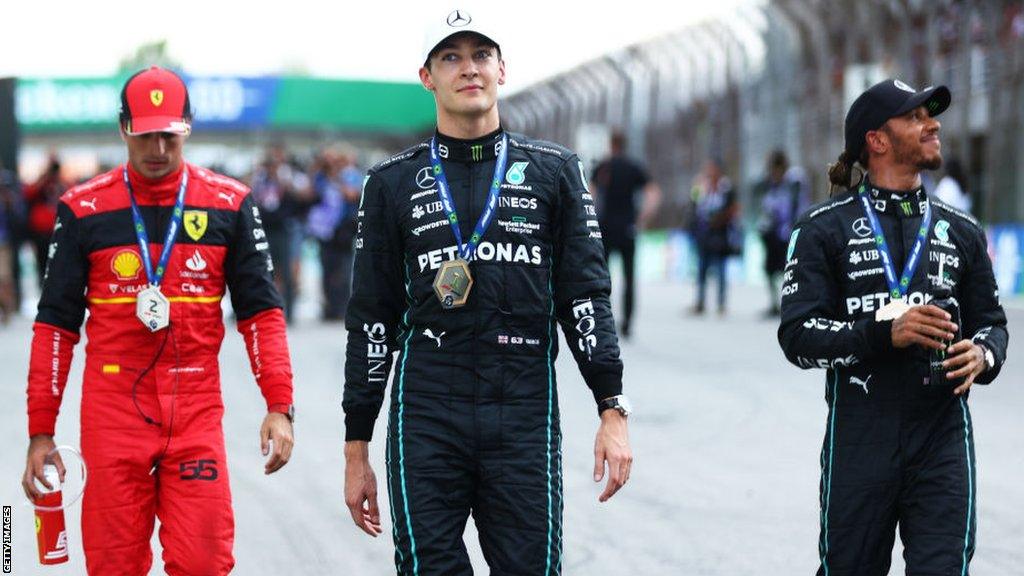Formula 1 sprint races: New format to be introduced for 2023's six events
- Published

A sprint race was last held before last year's Sao Paulo Grand Prix in November, with George Russell winning, Carlos Sainz second and Lewis Hamilton third
Formula 1 is to introduce a new format for 'sprint' races, starting at this weekend's Azerbaijan Grand Prix.
The 'sprint' - a shorter race held on Saturday - has been made independent of the grand prix and will have its own qualifying session, known as the 'sprint shootout'.
Qualifying to set the grid for the main Grand Prix will be held on Friday.
There will then be a shorter qualifying session, to the same knockout format, on Saturday to set the sprint grid.
The 'sprint' qualifying will have three sessions, with the slowest five cars eliminated at the end of the first two, but the sessions will be cut to just 12, 10 and eight minutes. The three sessions in a standard qualifying run for 18, 15 and 12 minutes, respectively.
While tyre use in a standard qualifying session is free, it will be mandated by the rules for the sprint race qualifying - teams will have to use new tyres in each session: the 'medium' compound in the first two and 'soft' in the final top-10 contest.
The new format was agreed unanimously on Tuesday at a meeting of the F1 Commission - a rule-forming body that consists of governing body the FIA, commercial rights holder F1 and the teams - before being rubberstamped by legislative body the FIA world council.
The idea behind the changes is to introduce more jeopardy into the 'sprint' by encouraging drivers to take more risks.
The previous format for sprint weekends, which were introduced in 2021, had the Friday qualifying session setting the grid for the sprint and the result of the sprint establishing the grid for the main grand prix.
That meant drivers were reluctant to take chances in the sprint because any errors or accidents would disproportionately harm their chances in the grand prix.
It remains to be seen whether the new format makes any significant difference, as it remains the case that the point rewards for the sprint are much lower than for the grand prix.
As before, the top eight finishers in the sprint will score points, from eight for first place down to one for eighth.
The new format, which will be used at all six of the sprint weekends this season, also has the benefit of eliminating a Saturday practice session in which teams ran only with race fuel loads and as a result was a meaningless spectacle for the audience.
This session has been replaced by the new qualifying session for the sprint event.
It was also agreed to increase the permitted number of specific engine components this season from three to four.
The components in question are the internal combustion engine, turbo-charger and the MGU-K and MGU-H, the two parts of the hybrid system that recover energy.
The decision is a boost for Ferrari and Mercedes, both of whom have drivers on their second examples of some of these components after just three races of the season, and are thus now further from suffering grid penalties for excessive parts usage than they were.